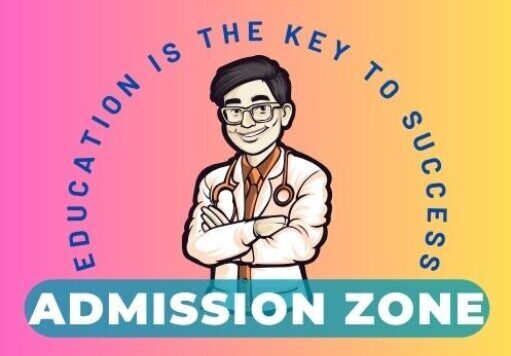MD Radiology is a branch of medical science which focuses on diagnosing and treating medical conditions through the use of imaging techniques. With advancements and growing importance in modern healthcare, Radiology has an important role in helping doctors diagnose diseases, monitor progress, and make good treatment decisions.
This article explores various factors of MD Radiology, including the curriculum, career opportunities, challenges, and future developments.
MD Radiology Overview
| Aspect | Details |
|---|---|
| Program Name | MD Radiology |
| Duration | Typically 3 years post-MBBS |
| Objective | To specialize in medical imaging and diagnostic radiology, learning to interpret imaging results |
| Key Focus Areas | – Radiological techniques (X-ray, MRI, CT scan, ultrasound, etc.) – Interpretation of medical images for accurate diagnosis – Radiation safety and dosimetry – Interventional radiology |
| Core Subjects | – Anatomy and Physiology in Imaging – Radiological Pathology and Techniques – Imaging Modalities (CT, MRI, Ultrasound, Nuclear Medicine) – Interventional Radiology and Procedures |
| Skills Acquired | – Proficiency in imaging interpretation – Understanding of radiological equipment and technology – Patient safety and ethical concerns in radiology |
| Clinical Training | Hands-on training with various imaging techniques and patient interaction |
| Specializations | – Diagnostic Radiology (X-ray, MRI, CT, etc.) – Interventional Radiology (minimally invasive procedures) – Neuroradiology, Pediatric Radiology, Oncoradiology, Musculoskeletal Imaging, and more |
| Admission Requirements | – Completion of MBBS degree – Entrance exams (depending on the institution or country) |
| Career Opportunities | – Radiologist in hospitals or clinics – Consultant Radiologist – Medical Imaging Researcher – Teaching and Academic roles in Medical Colleges |
| Average Salary | Varies by region, but can range between $60,000 to $250,000 annually |
| Job Demand | High demand for radiologists globally, especially in well-developed healthcare systems |
| Challenges in Radiology | – Need for constant updates on technological advancements – Dealing with large amounts of medical imaging data |
| Future of Radiology | – Increasing role of AI and machine learning in imaging interpretation – Growth in interventional radiology as a minimally invasive procedure option |
| Certifications/Accreditations | – Fellowship in subspecialties like neuroradiology, musculoskeletal imaging, or interventional radiology |
Understanding MD Radiology
MD Radiology is a postgraduate medical degree which includes the study of medical imaging techniques such as X-rays, CT scans, MRI scans, and Ultrasound. Radiologists are medical professionals who understand these images and make decisions that guide patient care.
The field of Radiology includes several subspecialties, such as:
- Interventional Radiology
- Pediatric Radiology
- Neuro-Radiology
- Musculoskeletal Radiology
The Role of a Radiologist in Healthcare
Radiologists have an important role in diagnosing and managing medical conditions. By imaging techniques, they can detect abnormalities such as tumors, fractures, infections, and other health issues. They also work with other specialists, providing important insights that support clinical decision-making. Depending on their subspecialty, radiologists analyse medical images, offer diagnoses, and may even recommend treatment options.
Why Radiology?
Radiology is a fascinating field because it helps doctors see inside the body without surgery. With the help of machines like X-rays, CT scans, and MRIs, radiologists can find out what’s wrong and guide treatments. It’s like solving puzzles with pictures.
I chose radiology because it mixes technology with patient care. It allows me to help people in a quiet but powerful way. Every image tells a story, and I love being the one who helps read and understand it.
Scope of Radiology
Radiology is a medical field that uses imaging techniques like X-rays, CT scans, MRI, and ultrasound to see inside the body. It helps doctors diagnose and treat many diseases without surgery. Radiologists play a key role in finding problems early, which makes treatment more effective.
The scope of radiology is growing with new technology. It’s used in almost every branch of medicine, from detecting broken bones to spotting cancer. As healthcare advances, the need for skilled radiologists continues to rise.
MD vs DNB Radiology: Which Path is Right for Your Career
Choosing between MD and DNB Radiology depends on your career goals and learning preferences.
- MD is often seen as more prestigious, with structured training in medical colleges, which can help in academic careers.
- DNB provides good clinical training in private hospitals and is equally recognized today.
Both paths lead to becoming a radiologist—focus on where you’ll get better training and support for your growth.
MD and DNB Equivalence: What Does It Mean
MD (Doctor of Medicine) and DNB (Diplomate of National Board) are both postgraduate medical degrees in India.
- MD is awarded by medical colleges under universities.
- DNB is awarded by the National Board of Examinations.
Both are now considered equal for jobs and teaching roles. The government and medical council recognize them as the same level of qualification, ensuring fair career opportunities for doctors with either degree.
First Things First: What Is the Difference Between MD and DNB
- MD (Doctor of Medicine) is a postgraduate degree given by medical colleges affiliated with universities in India. It involves training in a hospital setting with a focus on academics and research.
- DNB (Diplomate of National Board) is also a postgraduate qualification, but it’s awarded by the National Board of Examinations, and training often happens in private or non-university hospitals.
Both are valid, but the training setup and exam patterns differ.
Top Colleges for MD Radiology in India Stipend
- All India Institute of Medical Sciences (AIIMS), New Delhi
- One of the most prestigious colleges in India.
- Stipend: ₹90,000 to ₹1,00,000 per month (approx.).
- One of the most prestigious colleges in India.
- Postgraduate Institute of Medical Education and Research (PGIMER), Chandigarh
- Known for strong academics and clinical exposure.
- Stipend: Around ₹75,000 to ₹90,000 per month.
- Known for strong academics and clinical exposure.
- Christian Medical College (CMC), Vellore
- Famous for its quality education and patient load.
- Stipend: ₹25,000 to ₹35,000 per month (slightly lower than government colleges).
- Famous for its quality education and patient load.
- Armed Forces Medical College (AFMC), Pune
- Offers training under the Ministry of Defence.
- Stipend: ₹60,000 to ₹75,000 per month.
- Offers training under the Ministry of Defence.
- Maulana Azad Medical College (MAMC), Delhi
- Government college with an excellent radiology department.
- Stipend: Around ₹85,000 per month.
- Government college with an excellent radiology department.
- King George’s Medical University (KGMU), Lucknow
- Offers a balanced mix of academics and practical training.
- Stipend: ₹70,000 to ₹80,000 per month.
- Offers a balanced mix of academics and practical training.
- Grant Medical College, Mumbai
- Attached to JJ Hospital, with a high patient load.
- Stipend: ₹60,000 to ₹75,000 per month.
- Attached to JJ Hospital, with a high patient load.
Financial Aspects: Course Fees and Earning Potential
MD Radiology is one of the most demanding postgraduate medical courses in India, and its fees show that demand. In government colleges, fees can range from ₹80,000 to ₹3 lakhs per year, while private colleges may charge anywhere between ₹25 lakhs to ₹1 Crore for the full course. Despite the high investment, radiologists generally earn very well—starting salaries often range from ₹12–₹20 lakhs per year in private hospitals or diagnostics centers, with even higher potential as experience.
Internship and Residency Experience in Radiology
Radiology residency requires less physically activeness compared to many other specialties but requires strong analytical skills and attention to detail. During residency, students get practical experience in diagnostic imaging such as X-rays, CT scans, MRIs, and ultrasounds. Residents often work in rotation with different departments and get practical experience under supervision, which helps build their confidence and expertise.
Curriculum and Duration of MD Radiology
The MD Radiology program generally lasts for three years and includes both theoretical learning and practical training. During the course, students study:
- Various imaging techniques
- Radiation safety
- Anatomy and pathology
- Medical ethics
A significant section of the training includes clinical rotations, where students get practical experience in interpreting images and interacting with patients.
Admission Process for MD Radiology
To pursue MD Radiology, candidates must first complete an MBBS degree (Bachelor of Medicine, Bachelor of Surgery). After that, they must qualify in NEET PG entrance exams, which depends on the institution.
Once the exam is cleared, a counseling and seat allocation process starts. Admission is highly competitive due to the demand for radiologists.
Key Skills Required for MD Radiology
MD Radiology is a specialized and demanding field, requiring knowledge and practical skills:
- Attention to Detail: Radiologists must identify abnormalities in images to make accurate diagnoses.
- Technical Expertise: Understanding imaging technologies and staying updated with advancements is also important.
- Communication Skills: Radiologists must effectively communicate findings with physicians, specialists, and sometimes patients.
- Analytical Thinking: The ability to correlate imaging results with patient history is also important for accurate understanding.
Types of Imaging Techniques Used in Radiology
Students in MD Radiology are trained in a range of imaging techniques:
- X-rays: Commonly used for diagnosing fractures, infections, and lung conditions.
- CT Scans (Computed Tomography): Provide cross-sectional images useful for detecting cancers, internal bleeding, and vascular issues.
- MRI (Magnetic Resonance Imaging): Offers detailed images of soft tissues like the brain, muscles, and internal organs.
- Ultrasound: Uses sound waves for real-time imaging, widely used in pregnancy care and other health related issues.
Subspecialties in MD Radiology
Radiology offers a variety of subspecialties, each with its unique focus:
- Interventional Radiology: Uses imaging to guide minimally procedures, like biopsies and stent placements.
- Neuro-Radiology: Focuses on diagnosing brain and nervous system disorders using MRI and CT scans.
- Pediatric Radiology: Specializes in imaging for children, which often requires different techniques and care.
- Musculoskeletal Radiology: Focuses on bones, joints, and soft tissue imaging for conditions like fractures and arthritis.
Top Institutions for MD Radiology in India
Some of the best institutions for MD Radiology in India include AIIMS (Delhi and other branches), PGIMER (Chandigarh), CMC (Vellore), JIPMER (Puducherry), and AFMC (Pune). These institutions not only offer excellent training and exposure but also have lower tuition fees compared to many private colleges, making them highly competitive.
The Influence of Artificial Intelligence in Radiology
AI is transforming Radiology by providing quicker and more accurate diagnosis through advanced imaging analysis. While AI won’t replace radiologists, it acts as a powerful support regarding decision-making. Radiologists of the future are expected to work alongside AI systems, so understanding basic data science and image recognition tools is becoming increasingly valuable.
Research and Innovations in MD Radiology
Research and innovations in MD Radiology are transforming how doctors see inside and analyze the body. New technologies like advanced MRI and CT scans help find diseases easily and more accurately. Radiology is also becoming more accurate with the use of artificial intelligence, which helps doctors to analyze images accurately.
Preparing for MD Radiology Entrance Exams
Preparing for MD Radiology entrance exams requires good planning and focused study. It’s important to understand the exam pattern and cover all key topics like Anatomy, Physics, and Imaging techniques. Regular practice with sample papers can increase your confidence and improve time management.Staying consistent and calm helps you a lot during your preparation. Taking breaks and discussing topics with friends or mentors can make your studying easy. With dedication and smart work, clearing the exam and starting a career in Radiology becomes achievable.
Ethical Considerations in Radiology Practice
Ethical considerations in Radiology are very important to make sure patients get safe care. Radiologists must maintain patient privacy and share information only with the right people.
Being honest and clear with patients about their condition is also important. Radiologists need to keep learning and follow rules to provide the best care.
Role of Radiology in Multidisciplinary Healthcare Teams
Radiology has an important role in healthcare teams by helping doctors understand what’s the issue inside the body. Radiologists use imaging tests like X-rays, CT scans, and MRIs to provide important information that have important treatment decisions. Working together with Surgeons, doctors, and nurses, Radiologists make sure to provide accurate diagnoses and monitor progress. Their support makes the healthcare process more effective and improves patient outcomes in many medical cases.
Continuing Medical Education & Professional Growth in Radiology
Continuing medical education (CME) helps Radiologists to stay updated with the latest technology and techniques. By attending workshops, conferences, and online courses, they improve their skills and knowledge.
Professional career growth in Radiology also provides new certifications and taking on research or teaching roles. Staying open for learning helps Radiologists to provide the best care.
Work-Life Balance and Radiologist
Radiology is often known for offering a good work-life balance compared to surgical or emergency specialties. Since much of the work is based on imaging interpretation, radiologists can work in both hospital and private diagnostic systems with flexible hours. Teleradiology, which allows reporting from remote locations, has also opened doors for better work flexibility.
Career Opportunities After MD Radiology
After completing MD Radiology, graduates can choose a wide range of career options. They can work as radiologists in:
- Hospitals
- Diagnostic centers
- Private clinics
There are also opportunities in research and academics. Some professionals choose to further specialize in subspecialties for higher pay and senior roles. Others may take on consultancy or leadership positions in healthcare organizations.
Challenges Faced by Radiologists
Like any medical profession, Radiology has its own challenges:
- Workload and Stress: Radiologists often manage a high volume of cases, which can lead to long hours and stress.
- Keeping Up with Technology: The field changes rapidly, requiring quick learning and adaptation.
- Limited Patient Interaction: Radiologists generally have minimal direct contact with patients, which can sometimes be a limitation in understanding the full clinical history of the patient.
The Future of MD Radiology
The field of Radiology is changing fast. Artificial Intelligence (AI) is expected to play a major role in the future—helping with image analysis, improving accuracy, and streamlining workflow.
New imaging technologies are like:
- 3D imaging
- Functional MRI
- Molecular imaging
Making diagnostics more precise and personalized. These innovations are built to improve patient outcomes and uprank the role of radiologists in healthcare.

FAQs
A: The MD Radiology program generally lasts for three years after completing an MBBS degree.
A: Attention to detail, technical expertise, analytical thinking, and strong communication are the key skills required to become a Radiologist.
A: Yes, including Interventional, Neuro, Pediatric, and Musculoskeletal Radiology.
A: Radiologists can work in hospitals, diagnostic centers, private clinics, or start research and academic roles.
A: Common challenges include workload pressure, the need for continuous learning, and limited patient interaction.
Connect with Us
Start your medical educational journey with the Admission Zone! Contact us today on 9205488482/ 7599994403 or WhatsApp us to explore a world of educational possibilities in the state and secure your admission to a brighter future.
Conclusion
MD Radiology is a medical field with its advanced imaging techniques, it offers career options and the opportunity to make a real difference in patient care. While it requires dedication and continuous learning, the rewards—both professional and personal—make it a highly demanding career.
With new technologies, the future of Radiology looks good, with equipment for diagnosing and treating diseases more accurately than ever. Whether you’re planning to enter this field or simply want to understand its importance, it’s now understood that Radiology has an important role in saving lives and improving healthcare.








